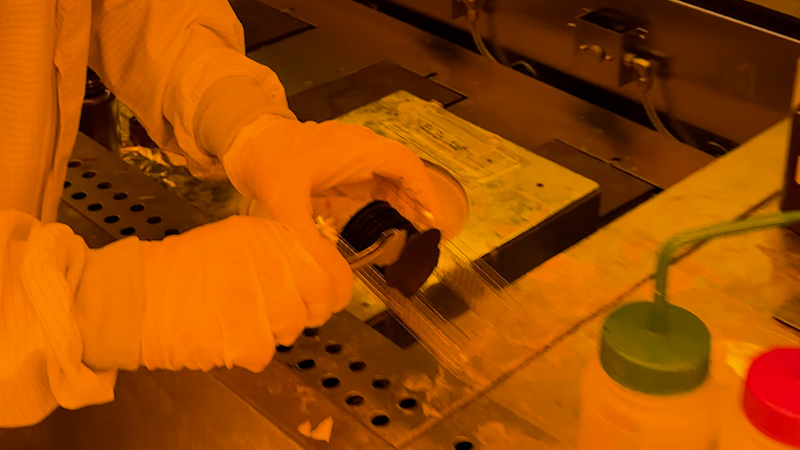Big Ideas on Small Scales with Jay Dalton
Michaela Martinez
Dalton helps students, staff and faculty learn how to use complex tools to develop miniscule solutions to big problems

Jay Dalton is used to thinking on a small scale. As a research and development engineer for Duke’s Shared Materials Instrumentation Facility (SMIF), Dalton spends his days working in a 10,000-square-foot laboratory, where students, faculty and even members of industry come to him to learn how to use the complex lab equipment decorating the room. But unlike other labs across Duke, the tools in SMIF work on a scale thousands of times tinier than most.
Open to all students, faculty and staff at Duke—and researchers across the triangle–SMIF, along with similar facilities at the University of North Carolina, Chapel Hill and North Carolina State University, are part of the Research Triangle Nanotechnology Network, which are all supported by the National Science Foundation. The systems in SMIF are highly specialized and allow users to develop tools and conduct research spanning fields including nanotechnology, biomaterials and biomedical engineering, information sciences, optoelectronics, sensor technology, and renewable energy.
Using resources in SMIF, users have created and tested microfluidic chips that can diagnose diseases like Ebola, obtained extremely accurate scans and models of bones or fossils, and developed silicone arrays that can detect how light bounces through skin to detect abnormalities like cancer. But these devices are not the only resources needed to accomplish this work.

“Our team and I teach people how to use these complicated and really expensive tools,” explains Dalton. “All of the research and development engineers share areas of expertise over a broad range of technologies, so we can help everyone whether they’re trying to use a micro-CT scanner or an ion beam milling system.”
Dalton specializes in a tool called the E beam lithography system, which involves using a beam of electrons to draw custom shapes on a specialized surface. These tools can create electronic devices like semiconductors, as they can produce patterns down to 10 nanometers, which is about 1000 times smaller than the width of a human hair.
Dalton was familiar with these small scales before he joined Duke’s SMIF more than 15 years ago, when he worked on computer chips as a process engineer for Motorola and Hitachi Semiconductors. But in the years since he began at Duke, Dalton has noticed one big change––SMIF is busier than ever.
“We’ve got 750 registered users for SMIF facilities, and that number grows each year,” he says. But despite a busier schedule, he is excited to help students translate ideas into projects.
“When a project starts, a student will come into my office and we’ll go over the entire project with them to map out what they want, what we can do and how we can help. We’ll give them guidance and training so they can use the tools themselves and learn how to run their experiments and develop devices on their own. We’ve got a great resource for students, and for the research community as a whole.”
